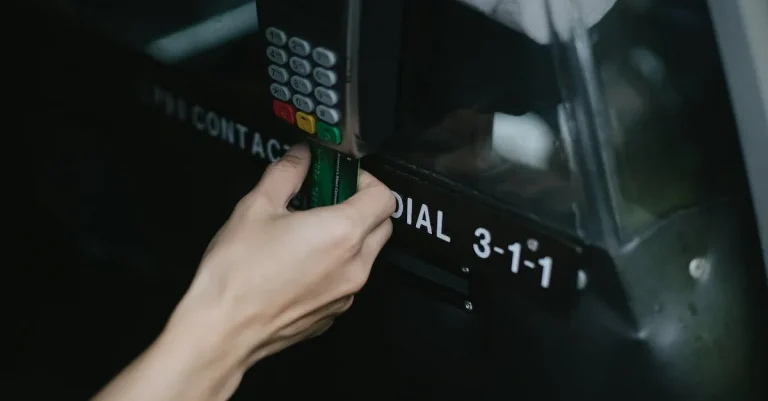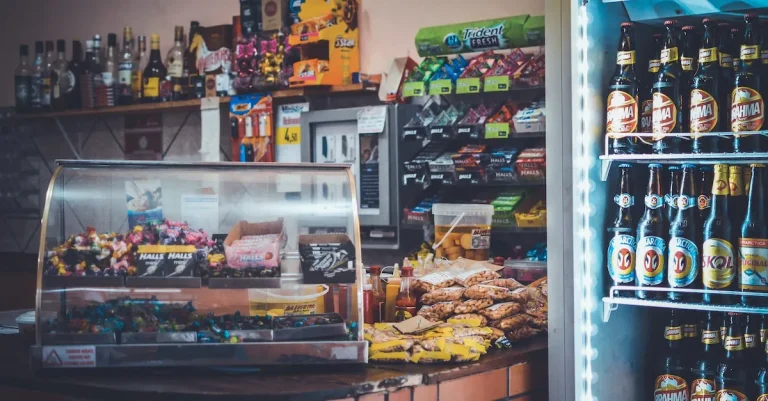Can You Buy Plants with EBT? Rules for Purchasing Vegetable, Herb, and Fruit Plants
If you receive Supplemental Nutrition Assistance Program (SNAP) benefits, you may be wondering if you can use your Electronic Benefits Transfer (EBT) card to purchase plants. Buying vegetable, herb, and fruit plants with EBT can help you start your own garden and produce food for your household.
If you’re short on time, here’s a quick answer: Yes, you can buy food-producing plants like tomatoes and basil with your EBT card. But you cannot use SNAP benefits for ornamental plants or flowers.
This in-depth guide covers everything you need to know about purchasing plants with EBT. You’ll learn the rules around eligible plants, tips for buying healthy plants, and how to use your EBT card at checkout when buying plants.
Background on SNAP and EBT Cards
Supplemental Nutrition Assistance Program (SNAP), formerly known as the Food Stamp Program, is a federal assistance program in the United States that provides eligible low-income individuals and families with funds to purchase food.
SNAP benefits are distributed through Electronic Benefit Transfer (EBT) cards, which work similarly to debit cards.
What is SNAP?
SNAP is the largest federal nutrition assistance program in the US, helping millions of individuals and families access nutritious food. The program is administered by the United States Department of Agriculture (USDA) and provides eligible recipients with monthly benefits to purchase food items.
To qualify for SNAP benefits, individuals and families must meet specific income and resource requirements set by their state. The application process includes providing documentation such as proof of income, expenses, and household composition.
SNAP benefits can be used to purchase a wide range of food items, including fruits, vegetables, dairy products, bread, meat, and more. However, there are certain restrictions on what can be purchased with SNAP benefits, including alcoholic beverages, tobacco products, hot foods, and prepared meals.
How EBT Cards Work
EBT cards are the primary method for distributing SNAP benefits. These cards work similarly to debit cards, allowing recipients to make purchases at authorized retailers. The benefits are automatically loaded onto the card each month, and recipients can use them to buy eligible food items at approved stores, supermarkets, and farmers’ markets.
When using an EBT card, recipients simply swipe the card at the point of sale and enter their Personal Identification Number (PIN) to authorize the transaction. The purchase amount is deducted from the available balance on the card.
It’s important to note that EBT cards cannot be used to withdraw cash or make non-food purchases. The cards are strictly for purchasing approved food items for home consumption.
Many retailers, including major grocery store chains, accept EBT cards. Additionally, some farmers’ markets participate in programs that allow SNAP recipients to use their benefits to purchase fresh fruits, vegetables, and other locally-grown produce.
For more information on SNAP and EBT cards, you can visit the official USDA website.
SNAP Rules for Buying Plants
Plants Must Produce Food
When it comes to purchasing plants using EBT (Electronic Benefit Transfer) through the Supplemental Nutrition Assistance Program (SNAP), there are specific rules to follow.
One of the key rules is that the plants must produce food. This means that you can use your EBT card to buy vegetable, herb, and fruit plants that are intended for consumption.
SNAP recognizes the importance of providing individuals and families with the means to grow their own food and become self-sustainable. By allowing the purchase of plants that produce food, SNAP encourages healthy eating habits and empowers people to take control of their own nutrition.
It’s important to note that the plants you purchase must be intended for growing and harvesting food. This means that plants like tomato plants, lettuce plants, and strawberry plants are eligible for purchase using EBT.
These plants allow SNAP recipients to grow their own fresh produce, saving money in the long run and promoting a healthier lifestyle.
Ornamental Plants and Flowers Not Allowed
While SNAP allows the purchase of plants that produce food, it does not permit the use of EBT funds to buy ornamental plants or flowers. This means that plants purely intended for decorative purposes, such as roses, tulips, or houseplants, are not eligible for purchase using EBT.
The reason behind this rule is that SNAP aims to focus on providing access to nutritious food rather than non-essential items. While ornamental plants and flowers can certainly brighten up a space, they do not serve the same purpose as plants that produce food.
SNAP funds are intended to be used for essential and nutritious items, ensuring that recipients have access to the necessary resources for a healthy diet.
It’s always a good idea to check with your local farmers’ market or grocery store to see what specific plants are eligible for purchase using EBT. Different states or regions may have slightly different guidelines, so it’s best to be aware of any additional restrictions or requirements in your area.
Where to Buy Eligible Plants with EBT
Farmers Markets
One great option for purchasing eligible plants with EBT is farmers’ markets. These markets are a hub for local farmers and often offer a wide variety of vegetable, herb, and fruit plants.
Not only can you find a diverse selection of plants, but you’ll also have the opportunity to support small-scale farmers in your community. Farmers markets provide a vibrant and social atmosphere, making it a pleasant experience to shop for plants and other fresh produce.
Additionally, some farmers markets may even offer discounts or incentives for EBT users, making it an even more affordable option.
Nurseries and Garden Stores
Nurseries and garden stores are another excellent choice for purchasing eligible plants with EBT. These establishments specialize in selling plants, making it easier to find the specific varieties you’re looking for.
Whether you’re in search of heirloom tomatoes, aromatic herbs, or exotic fruit trees, nurseries and garden stores often have a wide range of options to choose from. They also provide knowledgeable staff who can offer advice and guidance on how to care for your plants.
While some nurseries may not accept EBT directly, it’s always worth calling ahead or checking their website to see if they participate in any programs that allow EBT payments.
Grocery Stores
Believe it or not, many grocery stores now sell vegetable, herb, and fruit plants, and some even accept EBT as a form of payment. These stores recognize the importance of providing affordable and accessible options for individuals and families to grow their own food.
While the selection at grocery stores may not be as extensive as at farmers’ markets or nurseries, they often have popular varieties of plants that are suitable for home gardens.
Grocery stores also offer the convenience of one-stop shopping, allowing you to buy your plants along with your groceries. It’s a convenient option for those who may not have access to farmers’ markets or nurseries in their area.
When considering where to buy eligible plants with EBT, it’s essential to check the specific policies of each establishment. Some places may have limitations on the types of plants or products that can be purchased with EBT, so it’s always a good idea to inquire beforehand.
Additionally, it’s worth mentioning that the availability of eligible plants with EBT may vary depending on your location. However, with the increasing interest in gardening and sustainable food systems, more and more retailers are recognizing the importance of making plants accessible to all individuals, regardless of their payment method.
Tips for Purchasing Healthy Food-Producing Plants
When it comes to purchasing food-producing plants, it’s important to choose healthy options that will thrive in your area and provide you with a bountiful harvest.
Here are some tips to help you make the best choices:
Stick to Plants That Thrive in Your Area
One of the key factors in successfully growing food-producing plants is selecting varieties that are well-suited to your climate and growing conditions. Before making a purchase, do some research to find out which plants thrive in your area.
This will ensure that you choose plants that are more likely to grow and produce an abundance of vegetables, herbs, or fruits. Websites like The Old Farmer’s Almanac or Gardening Know How can provide valuable information on plant suitability.
Inspect Plants for Pests and Disease
Before bringing home any plants, take a close look at them to check for any signs of pests or disease. Look for yellowing leaves, holes in the foliage, or any unusual spots or discoloration.
Additionally, be on the lookout for any pests, such as aphids or mealybugs, that may be present on the plant. Avoid purchasing plants with visible signs of pests or disease to prevent the spread to other plants in your garden.
These could be indicators of an underlying issue that may affect the plant’s health and productivity.
Consider Starting from Seeds
While buying established plants can be convenient, starting from seeds can be a cost-effective and rewarding option. Not only does it give you the opportunity to grow a wider variety of plants, but it also allows you to control the entire growing process from seed to harvest.
Starting from seeds also gives you the advantage of being able to select the healthiest and strongest seedlings for transplanting. You can find a wide variety of seeds at your local garden center or online seed suppliers like Burpee or Baker Creek Heirloom Seeds.
By following these tips, you can ensure that you make informed decisions when purchasing food-producing plants. Whether you choose to buy established plants or start from seeds, selecting healthy options and taking proper care of them will help you enjoy a successful and fruitful harvest.
Using Your EBT Card for Plant Purchases
If you are wondering whether you can buy plants with your EBT card, the answer is yes! The Supplemental Nutrition Assistance Program (SNAP), commonly known as EBT or food stamps, allows recipients to purchase vegetable, herb, and fruit plants as long as they are intended for food production.
This means that you can use your EBT card to buy plants that will eventually provide you with fresh, nutritious produce.
Inform the Cashier You’re Using EBT
When you are ready to make your plant purchase, it’s important to inform the cashier that you will be using your EBT card. They will guide you through the process and ensure that your transaction is processed correctly.
Remember, it’s always a good idea to double-check with the store beforehand to make sure they accept EBT for plant purchases, as not all retailers may offer this option.
Enter Your PIN
Once you have informed the cashier about using your EBT card, you will be prompted to enter your Personal Identification Number (PIN). This PIN serves as a security measure to protect your benefits and ensure that only you can access them.
Enter your PIN carefully to complete the transaction smoothly.
Select ‘Food’ When Prompted
During the checkout process, the cashier will typically ask you to select the type of purchase you are making. When prompted, make sure to select the option for ‘food’ as this is the category under which plant purchases fall.
By selecting ‘food,’ you are ensuring that your plant purchase is correctly categorized and eligible for purchase using your EBT card.
It’s worth noting that while EBT can be used to purchase plants, it cannot be used to buy other gardening supplies such as pots, soil, or tools. The program is specifically designed to assist low-income individuals and families in accessing nutritious food options, including homegrown produce.
Conclusion
Using your SNAP EBT benefits to purchase vegetable, herb, and fruit plants can help you start a garden and produce nutritious food for your household.
Just be sure to follow the rules about eligible plants, shop at EBT-accepting retailers, and care for your plants properly. With some effort, you can grow your own produce and maximize the value of your SNAP assistance.









